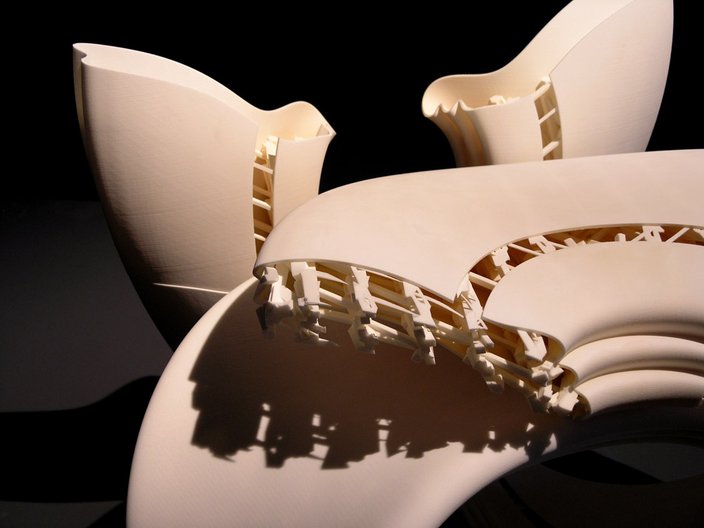28 March 2011
by Ellie Smith
Last week the RSA programmed an event to discuss new manufacturing technologies in the 21st Century and, as the theme chimed well with some research the ADF team has recently commissioned, I went along to hear the current debates around manufacturing, innovation and design. The event was chaired by Hugh Aldersey-Williams with a keynote presentation by product designer Assa Ashuach, and a discussion with Sebastian Conran, open innovation consultant Roland Harwood and additive manufacturing expert Neil Hopkinson. Emily Campbell set the scene in relation to new ways of making and asked whether user-maker technologies answer a human need to fabricate – drawing on her resourcefulness manifesto. Hugh Aldersey-Williams described how the technology of making is radically changing with the development of 3D printing and additive manufacturing.
Assa’s informative presentation focused on his use of digital tools that allow anyone to specify 3D objects – the user becomes the co-designer who can modify shapes within certain limits set by the designer. Assa’s percentage system to describe this interaction helped to show the possible level of user involvement in a system of co-design – for example 90% 10%, 50% 50% and so on. Assa showed lots of visuals of his work demonstrating the breadth of the technologies application: the Osteon and 501 chairs that reduce material usage through their single moulding were particularly striking. He sees it as a professional design process that brings about an experience for co-design by the user, rather than a replacement of the role of the designer.
In the discussion afterwards questions arose largely in relation to the associated benefits of these technologies as well as current limitations such as costs. The overarching theme was whether the technology brings democratisation to manufacturing – whether it’s a game or of real benefit. It covered the empowering possibilities of these technologies, the issue of ownership in co-designed work, the coming together of design and manufacturing capabilities, the implications for the purpose of making things and a rethinking of craft and the handmade, whether it allows the democratisation of design or only of manufacturing, how to turn this into a design system, what the implications are for sustainability issues as local production takes the lead, whether this is likely to increase consumption.
Overall I took away a sense of the role of the non-professional manufacturer and was left wondering about whether, as Roland suggested, ‘the more the tools of production are democratised, the greater the potential for innovation,… and for manufacturing that is personal, sociable and sustainable’. But as well as the promise to reinvigorate manufacturing on new terms, there are many as yet unanswered questions to explore about the customisation of objects and what this means for design and manufacturing.
The new RSA Design pamphlet by Hugh Aldersey-Williams The New Tin Ear: Materials, Manufacturing and the Rise of the User-Maker was made available at the event and is well worth reading as it gives a greater depth to some of the topics raised: the motivation to make, the promise of localism, less stuff better fit.
You can listen to the talk on the RSA website and it will also be available as a video shortly.
